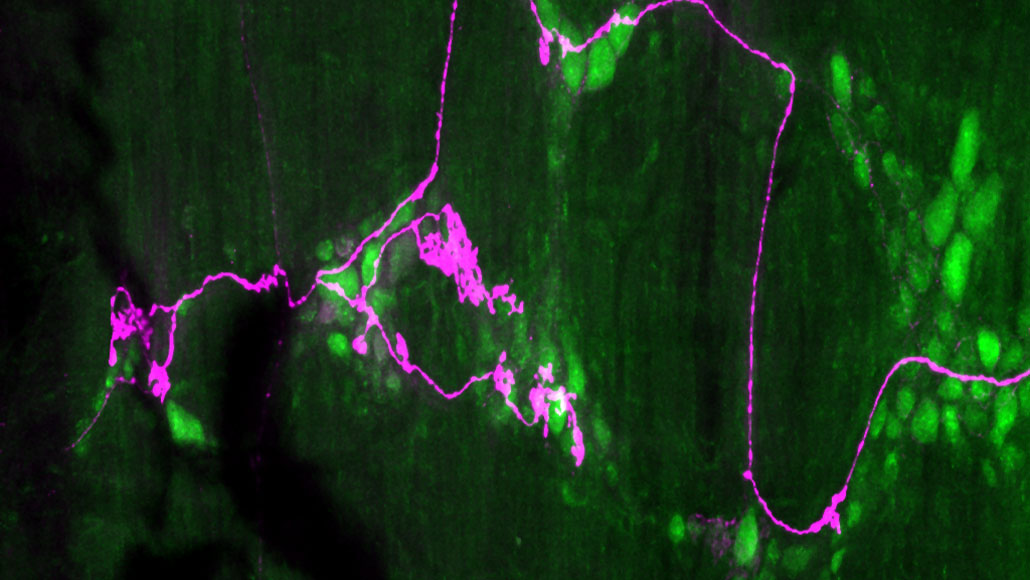Full intestines, more than full stomachs, may tell mice to stop eating
Nerve endings in mice’s intestines that sense a full load could be a part of appetite control

Newly described nerve endings (pink) in a mouse’s intestine sense stretching, a pull that may send a “stop eating” signal to the brain.
Knight lab/UCSF







